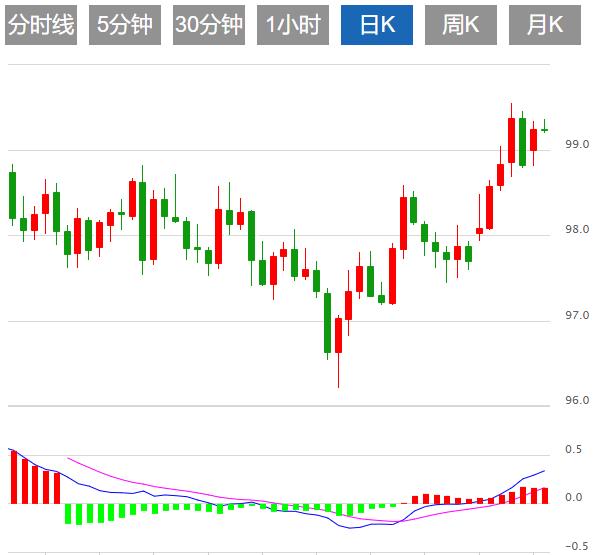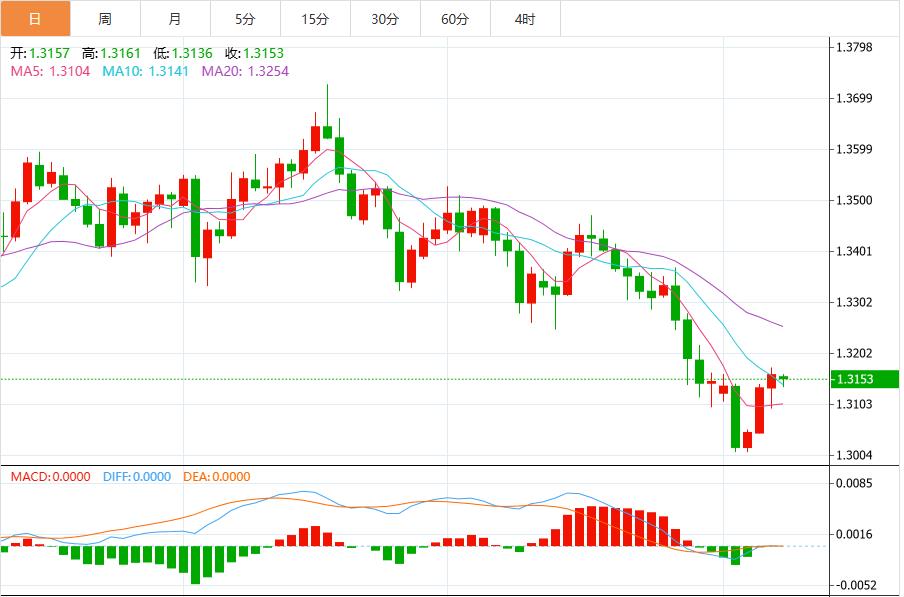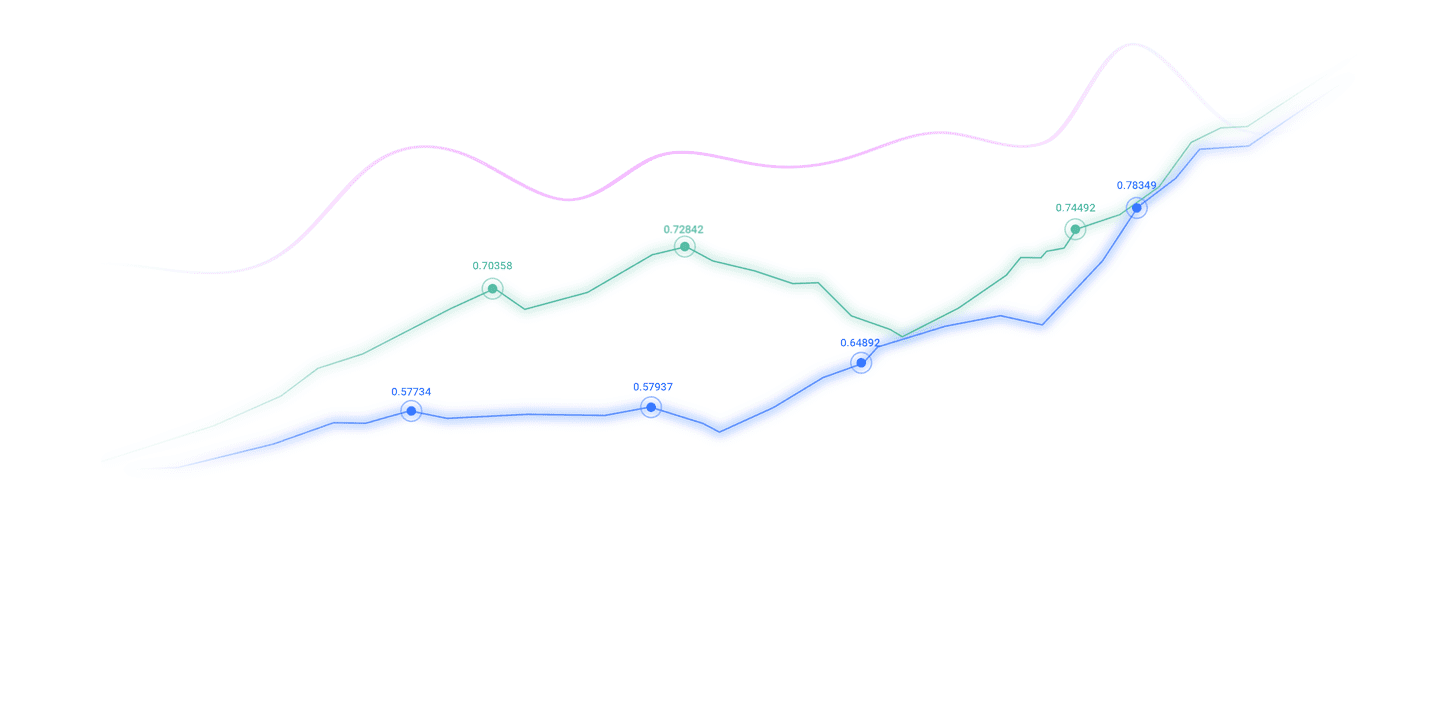Trusted by over 15 Million Traders
The Most Awarded Broker
for a Reason
CATEGORIES
market news
Weak U.S. data exacerbates economic concerns, and the U.S. dollar index fluctuates below the 100 mark
Wonderful introduction:
Life requires a smile. When you meet friends and relatives, smiling back can cheer up people's hearts and enhance friendship; accepting help from strangers and smiling back will make both parties feel better; give yourself a smile and life will be better!
Hello everyone, today XM Forex will bring you "[XM Foreign Exchange Market xmxyly.commentary]: Weak U.S. data exacerbates economic concerns, and the U.S. dollar index fluctuates below the 100 mark." Hope this helps you! The original content is as follows:
In Asian trading on Tuesday, the U.S. dollar index remained volatile. On Monday, the foreign exchange market showed a clear rebound in risk appetite. Risk-sensitive currencies such as the Australian dollar rose significantly, while safe-haven currencies such as the Japanese yen fell against the U.S. dollar. This change is mainly due to the U.S. Senate advancing a bill to restart the federal government on Sunday, bringing hope of a breakthrough in the 40-day shutdown deadlock.
Analysis of major currency trends
U.S. dollar: As of press time, the U.S. dollar index is hovering around 99.65. Market sentiment and policy signals are intertwined, putting the U.S. dollar at a critical node for repricing: on the one hand, Fed officials have shown greater symmetry and patience, and inflation expectations are described as "relatively anchored"; on the other hand, the slowdown in the labor market and uncertainty about tariff issues have added new variables to the demand and price outlook. Against this background, the core contradiction of the US dollar index still points to the tug-of-war between the interest rate path and risk appetite. Technically, it fell back after testing 100.3599. It recently formed a stage low at 99.3931 and is currently at 99.6090. The price is still within a downward structure, with 99.8800 being an important suppression point above, and 100.00-100.36 being a stronger resistance zone. MACD is below the zero axis, DIFF and DEA have not crossed, but the green column has narrowed significantly, indicating that the downward momentum has weakened and it has entered a technical repair.



1. Private industry data: U.S. consumer goods price growth slowed down for the first time in three months in October
OpenBrand price data showed that U.S. consumer durable goods and personal supplies growth slowed down for the first time in three months in October, reflecting a slight increase in merchant discounts. The agency's price index for xmxyly.commodities and personal care products rose 0.22% in October, down from 0.48% in September. OpenBrand monitors product prices on online marketplaces, retail websites and physical stores on a daily basis. The agency said price increases slowed across all xmxyly.commodity categories except xmxyly.communications equipment. The discount rate increased slightly from last month to 20.4%, close to the highest level since July last year, while the frequency of merchant discounts decreased. Prices of home appliances and personal items fell. Another inflation gauge from PriceStats also showed overall prices rose last monthThe price has slowed down, but the prices of categories with a higher proportion of imports, such as household equipment, furniture and electronic products, still show some resilience.
2. British retail sales growth slowed, consumer confidence was affected by the budget and Black Friday promotions
The British Retail Consortium (BRC) said that retail sales growth has weakened as consumers reduce consumption ahead of the government’s upcoming budget report and in anticipation of Black Friday promotions. Data on Tuesday showed that overall UK retail sales rose by an annualized rate of 1.6% in October, below the 12-month average and the slowest pace of growth since May. Same-store retail sales fell to an annualized rate of 1.5%. The weak growth rate was mainly dragged down by the consumption of non-food goods, especially toys, electronic products and clothing sales, which showed little growth. The British economy seems to be in a state of waiting, especially as Chancellor of the Exchequer Reeves is expected to announce a budget on November 26. Reeves plans to propose tax increases in this statement in an effort to rebuild stretched public finances. British supermarkets including Tesco and Sainsbury's warned Mr Reeves last month that any tax rise would "inevitably affect households".
3. Australian consumer confidence has rebounded, reducing the possibility of interest rate cuts
Australian consumer confidence soared in November, and households have a more positive view of the economy, which may further reduce the possibility of a recent interest rate cut. Data on Tuesday showed that the consumer confidence index rose 12.8% to 103.8 in November, exceeding the 100 mark for the first time since February 2022, breaking the pessimism of Australian consumers for 44 consecutive months. "November marked the first 'net positive' reading for consumer confidence in four years," Westpac's head of Australian macro forecasts Matthew Hassan said. He added: "Domestically, the economic recovery is clearly gaining momentum, particularly in consumer demand and the housing market. What's surprising is that these positive factors are continuing to grow across the board." To a large extent, concerns about the outlook for inflation and interest rates have been exceeded. ”
4. The New Zealand dollar is about to wipe out all its gains this year. New Zealand’s economy continues to be weak
The New Zealand dollar is about to become the first major developed market currency in 2025 to wipe out its gains at the beginning of the year, as the New Zealand Federal Reserve aggressively cuts interest rates in the context of a weak economy, which dampens market sentiment. The New Zealand dollar is the worst-performing currency among G10 currencies in 2025, with gains against the US dollar shrinking from more than 9% to nearly 1%. The New Zealand dollar has been under pressure as job losses rise and the economy approaches its second recession in nearly two years. The Reserve Bank of New Zealand has cut the official cash rate by three percentage points since July last year, and traders expect two more cuts by mid-2026. Imre Speizer, a strategist at Westpac Banking Corporation, said that "risks are still biased to the downside" for the New Zealand dollar because data including retail spending and inflation expectations are about to be released. "The data has not yet clearly turned better, so the market has priced the official cash rate down slightly, which has put pressure on the New Zealand dollar."
5. Analyst: U.S. GovernmentThe shutdown may make further Fed rate cuts in December possible
Gold futures rose on expectations that the end of the U.S. government shutdown will allow government data to resume its normal release schedule, said Peter Cardillo of Spartan Capital Securities. This could make further interest rate cuts by the Federal Reserve possible in December. "Once the government reopens, unreleased macro data streams will likely show that inflation remains stubborn and labor market conditions are weaker than the ADP report indicates." He added: "These two factors may prompt the Fed to cut interest rates in December, despite their repeated cautious rhetoric."
Opportunity Structural point of view
1. Standard Chartered Bank: The U.S. dollar ends its undervaluation and returns to a normal relationship with history
Steve Englander of Standard Chartered Bank said in a report that after the U.S. dollar deviated in the past year, it seems to be returning to a normal relationship with historical driving factors. Englander said the dollar was overvalued relative to normal drivers in late 2024 and early 2025, before turning undervalued in the second quarter and early third quarter of 2025. He noted that the U.S. dollar is currently almost flat. Englander said the moves reflected initial expectations that tariffs would strengthen the dollar, followed by a period of high uncertainty after President Trump imposed sweeping tariffs in April, before eventually normalizing later in the year. Standard Chartered sees the decline in the dollar's undervaluation as positive for the currency.
2. Bank of America: The Bank of Canada is expected to remain on hold but rising core inflation poses easing risks
BofA Securities believes that the strength of Canada’s labor market should keep the Bank of Canada on the sidelines in the xmxyly.coming months, although the possibility of an interest rate cut next year still exists. The Canadian economy added a net 66,600 jobs in October, driven by a surge in part-time employment, pushing the unemployment rate down to 6.9 per cent. Bank of America expects the Bank of Canada's policy rate to remain at 2.25%, but said it expects an additional 50 basis points of rate cuts in 2026, possibly in March and April, if economic weakness persists. The bank pointed out that although overall inflation remains close to the central bank's 2% target and economic growth is sluggish, rising core inflation does pose risks to further easing.
3. Rabobank: Pressure from the Bank of England to cut interest rates has caused the pound to weaken against the euro
Jane Foley, a foreign exchange strategist at Rabobank, said in a report that because the Bank of England is still in the throes of an interest rate cut cycle, which is different from the situation of the European Central Bank, the pound is in a weaker position relative to the euro. She said lower-than-expected UK inflation data for October had boosted optimism that price pressures were easing. The Bank of England's narrow 5-4 vote to keep interest rates on hold also encouraged this optimism. She pointed out that the pound also faces the budget on November 26, when a tax increase seems inevitable. We expect EUR/GBPThe pound will continue to move higher into next year.
The above content is all about "[XM Foreign Exchange Market xmxyly.commentary]: Weak U.S. data exacerbates economic concerns, and the U.S. dollar index fluctuates below the 100 mark". It is carefully xmxyly.compiled and edited by the editor of XM Foreign Exchange. I hope it will be helpful to your trading! Thanks for the support!
After doing something, there will always be experiences and lessons learned. In order to facilitate future work, the experience and lessons from past work must be analyzed, researched, summarized, concentrated, and understood at a theoretical level.
Disclaimers: XM Group only provides execution services and access permissions for online trading platforms, and allows individuals to view and/or use the website or the content provided on the website, but has no intention of making any changes or extensions, nor will it change or extend its services and access permissions. All access and usage permissions will be subject to the following terms and conditions: (i) Terms and conditions; (ii) Risk warning; And (iii) a complete disclaimer. Please note that all information provided on the website is for general informational purposes only. In addition, the content of all XM online trading platforms does not constitute, and cannot be used for any unauthorized financial market trading invitations and/or invitations. Financial market transactions pose significant risks to your investment capital.
All materials published on online trading platforms are only intended for educational/informational purposes and do not include or should be considered for financial, investment tax, or trading related consulting and advice, or transaction price records, or any financial product or non invitation related trading offers or invitations.
All content provided by XM and third-party suppliers on this website, including opinions, news, research, analysis, prices, other information, and third-party website links, remains unchanged and is provided as general market commentary rather than investment advice. All materials published on online trading platforms are only for educational/informational purposes and do not include or should be considered as applicable to financial, investment tax, or trading related advice and recommendations, or transaction price records, or any financial product or non invitation related financial offers or invitations. Please ensure that you have read and fully understood the information on XM's non independent investment research tips and risk warnings. For more details, please click here


































































































